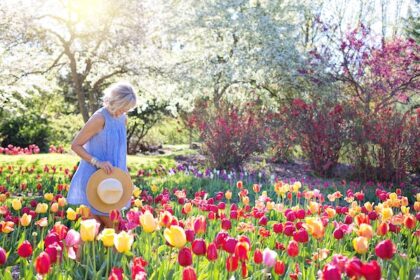Newsletter
LATEST NEWS STRAIGHT TO YOUR INBOX
My Account
Follow Us
Information


There is something special about growing your own fruits, vegetables, and herbs. The satisfaction and joy of watching your plants grow, bloom, and produce a bountiful harvest is priceless. However, without proper planning and organization, gardening can often feel overwhelming and intimidating. That’s why we’ve created a seasonal gardening calendar to help guide you through the year, from seed starting to harvest time. With this calendar, you’ll have everything you need to stay on track and maximize the yield of your garden. Let’s get started!
Spring (March-May):
Spring is the season of renewal and regeneration, and it’s the perfect time to start planning your garden. Begin by sketching out your garden’s layout. This will help you visualize where everything will go and how much space you’ll need. Once you’ve figured out your garden’s layout, it’s time to start seed starting. Start your seeds indoors 6-8 weeks before the last frost date. Some seeds that are great to start in the spring are tomatoes, peppers, eggplant, and cucumbers. As the weather begins to warm up, it’s also time to plant cool-season crops like lettuce, spinach, and peas. Make sure to prep your soil beforehand by adding compost and organic matter to provide the necessary nutrients for your plants to thrive.
Summer (June-August):
Summer is the season of abundance, and your garden should reflect that. By now, your seedlings should have been transplanted into the ground, and your cool-season crops should be harvested. It’s time to plant warm-season crops like squash, beans, and corn. Make sure to keep your garden regularly watered and fed with fertilizer. You may also want to consider protecting your plants from the intense summer sun by providing shade or using a row cover.
Fall (September-November):
Fall is the season of harvest, and your garden should be in full swing. As the cooler weather approaches, it’s time to plant cool-season crops again like lettuce, kale, and arugula. It’s also time to start preparing your garden for winter. Remove any dead plants or debris, and mulch your soil to protect and nourish it during the colder months.
Winter (December-February):
Winter doesn’t have to be a time of dormancy for your garden. Depending on where you live, you can still plant winter crops like kale, spinach, and carrots. You may also want to consider planting cover crops like clover and vetch to enrich your soil and protect it from wind and erosion. Finally, take this time to reflect on the year and plan for next year’s garden. Consider what worked and what didn’t and start preparing for spring by ordering seeds and supplies.
Gardening is a rewarding and fulfilling hobby that doesn’t have to be overwhelming. With a bit of planning and organization, you can have a successful garden all year round. Remember to prep your soil, start your seeds on time, and consider planting seasonally appropriate crops. Take time to enjoy the beauty and bounty of your garden, and have fun experimenting with new plants and techniques. Happy gardening!